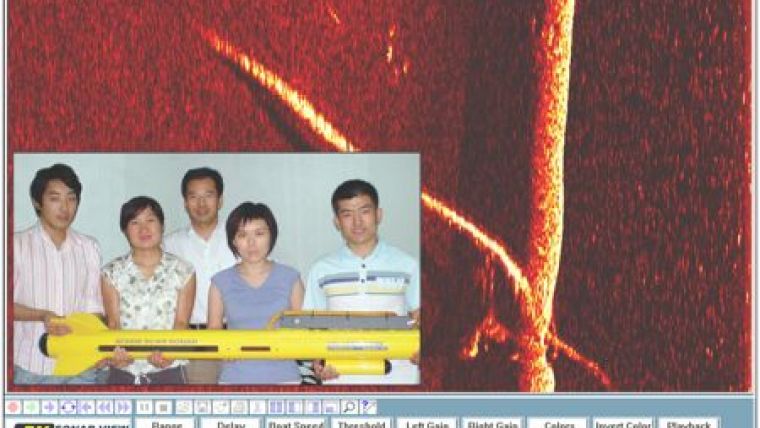Sonars and Magnotometers Assist in Asia
LPK Geomatic Services Company in Vietnam is using Fishers SSS-100K/600K dual-frequency side scan sonar and Proton 4 magnetometer. LPK has been involved in some of the country�s major marine construction works such as the Dai Ninh Hydo Power Station, Can Tho Bridge, HoChiminh City gas pipeline, and the port of Hiep Phuoc.
Managing director Truong An Phong says the side scan and magnetometer have been "very valuable" in these projects. "The sonar provides us with detailed images of the sea floor and the magnetometer shows us exactly where pipelines are located under the ocean bottom. We can store files on the computer, copy them to disk, or email them to our clients."
Yantai Shunda Ocean Engineering Co., located in China’s Shandong Province, has completed a number of high-profile marine construction jobs. The company is an active member of the International Marine Contractors Association (IMCA) and the Association of Diving Contractors International (ADCI). Their divers have performed numerous inspections and repairs in the oilfields of Shengli, Bohai, and Dagang. The company has also received contracts for salvage and pipeline tracking. To help in this area the company recently purchased a Proton 4 magnetometer, the super sensitive metal detector for iron and steel targets.
In Thailand, AAMC Co. Ltd. is a technology driven organization specializing in shallow water submarine installation and maintenance. They perform these services for telecommunication cables, natural gas conduits, and pipelines from oil rigs. Before beginning a trenching operation to lay a pipeline or cable, it is necessary to survey the seabed. To perform these surveys the company purchased the SSS-100K/600K sonar with mapping software. The software shows the size of the area being scanned and overlays it onto a grid with latitude and longitude lines as the x and y axis. As the boat moves back and forth across the survey grid, similar to moving a lawn, the sonar operator can see how much of the bottom on both sides of the boat is being scanned with each pass. The scanned area is highlighted in yellow and overlapping scans are highlighted in green. This ensures that no part of the area is missed.
Another company using the dual frequency sonar is Dae Kee Marine in South Korea. The company is a port service provider for foreign vessels visiting the Korean Peninsula. The company’s extensive experience and cost effective services has made them the exclusive provider of support to the US Navy, US Army, and US Coast Guard vessels. To ensure ships move freely in and of the country’s ports, Dae Kee must routinely survey navigation routes used by these vessels. Side scanning lets them insure the waterways are clear of debris and any obstructions.














